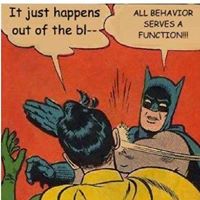What to wear, what to eat, where to sit, what activities to complete, what rewards are available, etc.
The day is a series of
following other peoples instructions and demands. Does that sound fun to you?
Sure doesn’t sound fun to me.
When creating a Behavior Plan, teaching the skill of choice making is often an antecedent intervention I recommend. I find that many problem behaviors are maintained or strengthened by the individual having a lack of control over their environment, or a lack of a communication system to let others know what they want or need. Hopefully all my readers know this, but just because a child doesn’t speak does not mean they have nothing to say or don’t desire anything.
·
So
why teach choice making? Making a choice is really making a decision. What you
are really doing is teaching the individual how to evaluate (Which one do I want), decide (Hmm, I want that one), and accept (If I pick red that means I can’t have blue).
Beyond teaching decision making, allowing for choice making during teaching or
therapy involves the kiddo in what is going on. You are now a team working together
to complete something both of you are interested in. It’s just human nature
that if I help decide or somehow invest in something, I am going to care more
about the outcome. Lastly, teaching an individual to make a choice is a
communication skill. If a nonverbal 3 year old can lead me to her toy cabinet
and point to a teddy bear, she is now communicating with even though she can’t
say “I want to see that teddy bear”.
·
How
can choice making skills be taught? There are lots of ways to create a choice
making program. What is most important is to focus on this key criteria:
1)
Begin
with tangible and visual choices over abstract choices. Hold out a doll and a
train to the child and tell them to “Pick one”, before you try to have them
choose before eating dinner at 5:00 or 7:00. Also, start with just 2 choices to
keep it simple.
2) If
the child doesn’t choose anything, then you choose. They need to understand
that “I can pick, or you can pick”.
3)
If
the child tries to reach for both items, don’t allow them to. Move the items
away and explain they need to pick one. Then try again.
4)
Once
the child has made a choice, that’s it. Do not allow them to keep bouncing
between two choices, or to say “But I wanted that one”. Once a choice has been
made, remove the other choice. This is very important especially when initially
teaching the skill.
5)
Accept
the form of communication the individual is capable of. This could be telling
you their choice, gesturing, sign language, pointing, etc. Be sure to reinforce
appropriate choice making so the skill will increase in the future.
*Tip – This isn’t just a skill useful for early learners. For older clients, I embed TONS of choice making into their therapy. They not only choose where we work (in your room or in the backyard?), which programs to complete and in what order, but their individual preferences are included in the materials they use and telling me what they want to work for. I also teach them about great choices vs. not great choices (I call them Green & Red Choices). Green choices add things: reinforcement, fun, and my attention/interaction. Red choices remove things, or cause fun things not to happen. When the individual is having difficulty listening, completing work, or keeping their hands to themselves, I may give them a reminder such as “Are you making a green or a red choice right now?”, and then together we discuss how to get back to making green choices.
Resource: “Solving Behavior Problems in Autism” by Linda Hodgdon




.jpg)




